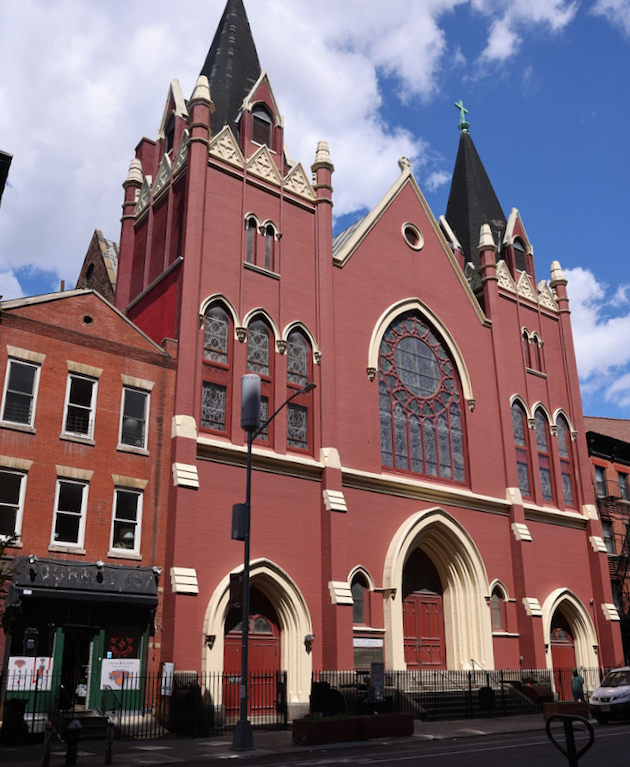
In recent years the Archdiocese of New York has abandoned all pretense of planning and transparency regarding the continuing disappearance of parishes, schools, and shrines. Mergers and closures occur without any communication being made to media or to the laity directly affected. In the case of parishes, for example, a researcher needs to consult a page called “Decrees” listed under “Parish Planning” in turn listed under “Pastoral Offices” on the Archdiocese of New York website to find out what is going on. And even here, if one takes one’s attention away for even a week, a new announcement may well have appeared. So, on August 11th, 2025, the archdiocese announced the relegation – in other words, the preparation for sale- of the church of St. Veronica on Christopher Street in Manhattan. 1)
Now I had previously written about St. Veronica and the initial decision to terminate the parish in 2017. 2) But opposition soon organized and the “St. Veronica Moving Forward Committee” continued the struggle. Indeed, in 2020 the archdiocese reversed its 2018 decree. 3) That was a remarkable achievement. It has been claimed that direct intervention by the Vatican was involved; I have no concrete evidence of this. (4)
But in any case, the reprieve was short lived. Apparently, several masses were celebrated after the supposed resumption of religious life in the church but no regular services recommenced. And the disputes over the financial vitality of St. Veronica’s resumed – the archdiocese following its tried-and-true play book, e.g., identifying a leak in the roof which could only be repaired by a disproportionate expense.(cf. what is going on today at Most Holy Redeemer parish). And now the archdiocese has returned to the situation of 2017. I cannot find any explanation for this latest turn of events. The decree of 2025 does not mention the 2020 decree it revokes. In addition to the usual boilerplate and platitudes, the 2025 decree has enigmatic statements such as:
“(O)nly those things that serve the exercise or promotion of worship, piety or religion are permitted in a sacred place.”
“The bishop is to exercise vigilance that abuses do not creep into ecclesiastical discipline, especially as regards the ministry of the word, the celebration of the sacraments…”
One wonders to what Cardinal Dolan is referring.
It’s easy to identify the economic and societal trends that crippled this parish. For St. Veronica had always been poor – its original congregation consisted of longshoremen and others engaged in the maritime industry. That economy has long disappeared from the immediate neighborhood of the church. By the 1970’s the New York gay scene had moved in instead. Finally, the area took a new turn as a center of luxury housing. That last transformation is best illustrated by the monumental customs warehouse across the street from St. Veronica – a relic of the neighborhood’s industrial and maritime past. In the 1980s this building was redeveloped as luxury apartments. That trend has continued. To the extent there is non-residential, non-entertainment activity in this neighborhood today it seems to involve the digital economy: PayPal offices are nearby. Former piers have been converted into parks; a fountain plays in front of pier 45. The lifestyle of the locals seems to be that of the modern hedonistic West – but, in contrast to the past, appears more hetero- than homosexual.
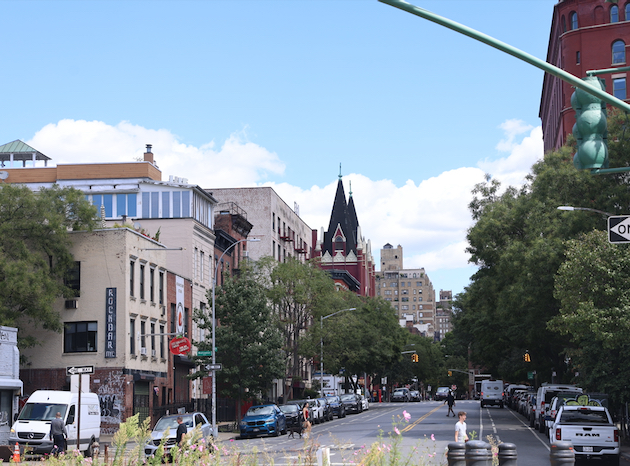
(Above) Christopher Street viewed looking East. In the middle are the two towers of St. Veronica’s. On the right is the massive bulk of the old customs warehouse (now luxury apartments); in the left foreground is Weehawken Street and reminders of a grittier era.
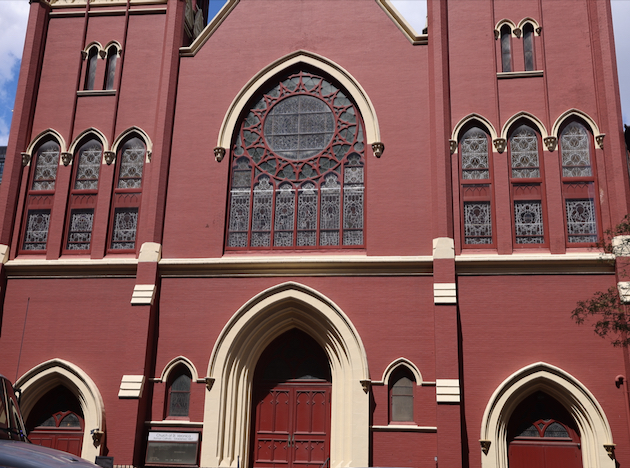
(Above) The exterior still looks great. Note that the stained glass of the facade still seems to be in place – it is otherwise unclear how much of the once splendid furnishings of this church are still inside.
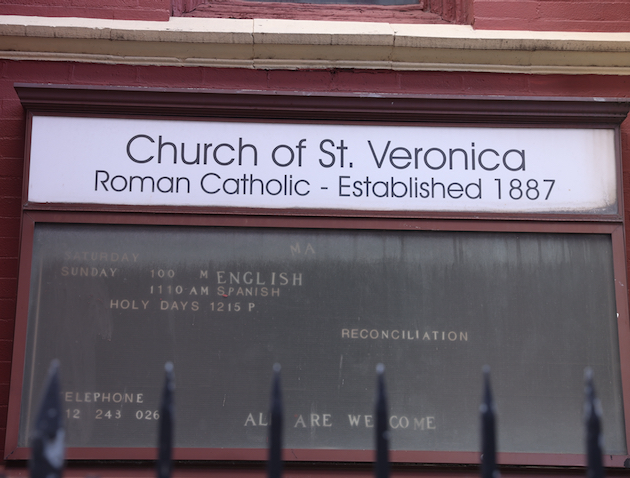
(Above) The last parish notice.
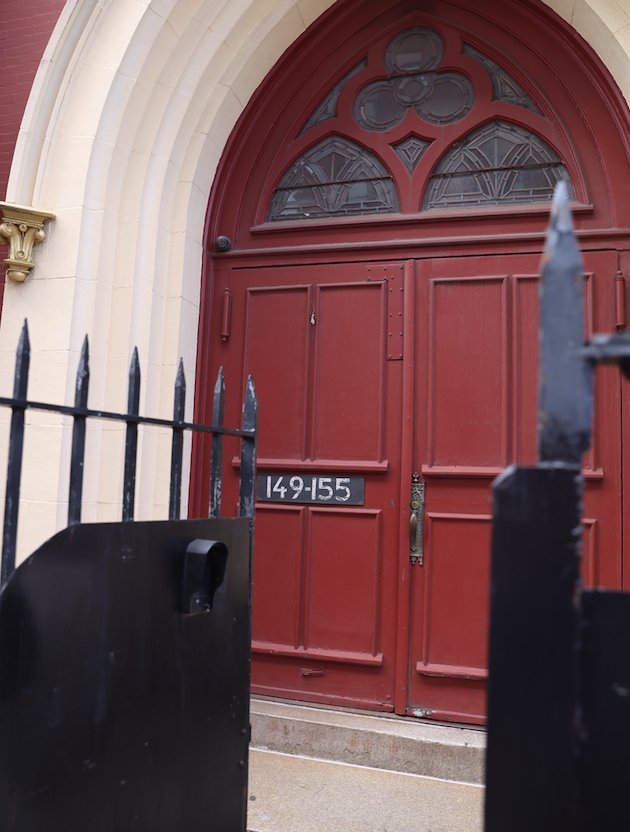
(Above) The basement of the church has been rented out (to a flamenco dance academy).
Strange! – a working-class parish that survived generations of economic hardship and then the tidal wave of what is now called the LGBT movement in the 1960’s through the 1980’s now succumbs to the prosperity of New York. 2025. One thing is clear, however: whatever spirituality the archdiocese of New York was offering at the Church of St. Veronica had absolutely no effect on the surrounding culture or society. What the New York archdiocese could not grasp was this: that while the LGBT wave and the subsequent speculative real estate wave involved forces that were not at all Christian, they did take what had been an obscure territorial parish and potentially thrust it into the national limelight. In this daunting environment, St. Veronica could have been a center of evangelization of more than local significance. This had happened in prior generations when parishes that had lost their original congregations had been recreated as “commuter churches’ such as St. Peter’s, St. Francis, St. Agnes, etc. (By the way, St. Veronica is near the Christopher Street PATH train entrance)
There were some timid attempts in this direction, such as the installation at this parish by Cardinal O’Connor of a “shrine to the victims of AIDS.” (which admittedly appears somewhat contrived) And later the Ecuadorian community, chased from St. Ann’s parish by Cardinal Egan, brought their own devotions (and sacrifices)to St Veronica. But at the end of the day the efforts of the archdiocese were totally inadequate to the task at hand.
At least as far as public presence and official recognition are concerned, other forces have triumphed. The length of Christopher Street and the Hudson River Park is adorned with LGBT flags. The Christopher Street Park itself has been repurposed into a (national) monument to the Stonewall incident. Since 2024 even the nearby subway station is no longer Christopher Street- Sheridan Square, but Christopher Street – Stonewall. The Roman Catholic church, on the other hand, which by means of St. Veronica’s church had visually dominated the streetscape since 1903, may now be departing the scene. 5)
- Decree on the Relegation of the church of Saint Veronica, New York ( 8/11/2025)
- The End of the Churches II ( 7/10/2017). The actual Decree of Relegation of the Church of Saint Veronica, South Manhattan, New York was issued on 5/26/2018. It also provides for moving the “Aids Memorial” to the Church of St Bernard/Our Lady of Guadalupe. For our 2024 description of St. Veronica see The Churches of New York LIII: A Church of the Poor (5/20/2014).
- Decree rescinding the Decree on the Relegation of the Church of Saint Veronica, South Manhattan, New York ( 8/2/2020)
- “St. Veronica’s Church saved – for now,” The Village Sun (5/26?2021); Schwartz, Arthur, “Is the Archdiocese letting St. Veronica’s fall apart?” The Village View (10/4/2023). Schwartz’s report contains colorful details of the struggle with the archdiocese which I have not verified.
- The battle continues: “Fate of St. Veronica’s Church, 149 Christopher Street, Up in the Air,” villagepreservation.org (8/28/2025).
(All accesssed 9/1/2025)
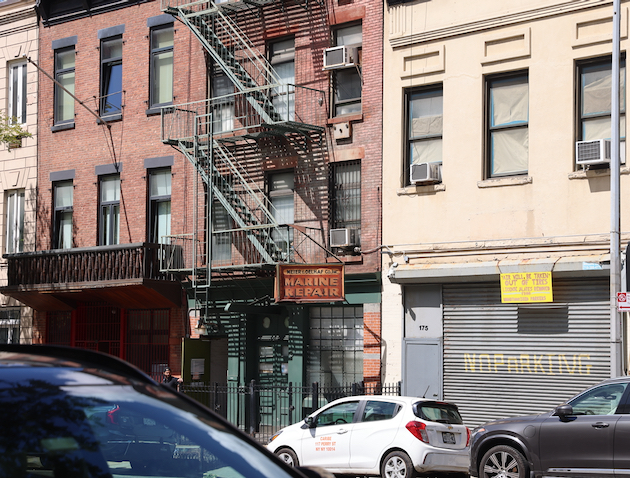
(Above) Immediately west of the church is an area more typical of the 1960s – 1970s than the present. The sign for a marine repair business that departed in 1984 is a relic of an even earlier age. It has attracted as much or more online commentary as St. Veronica’s. And note the belligerent yellow sign on the right: don’t dare to park here! Several cars have.
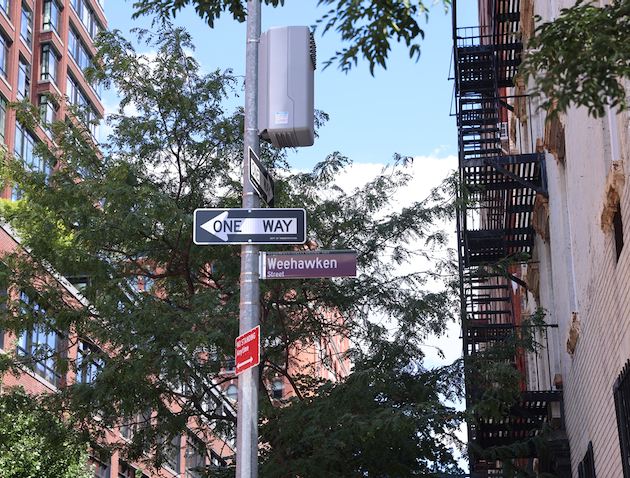
(Above and below) Weehawken Street, west of St. Veronica’s, is one of the shortest and most decrepit streets in Manhattan. It is a relic of the area’s industrial/maritime past.

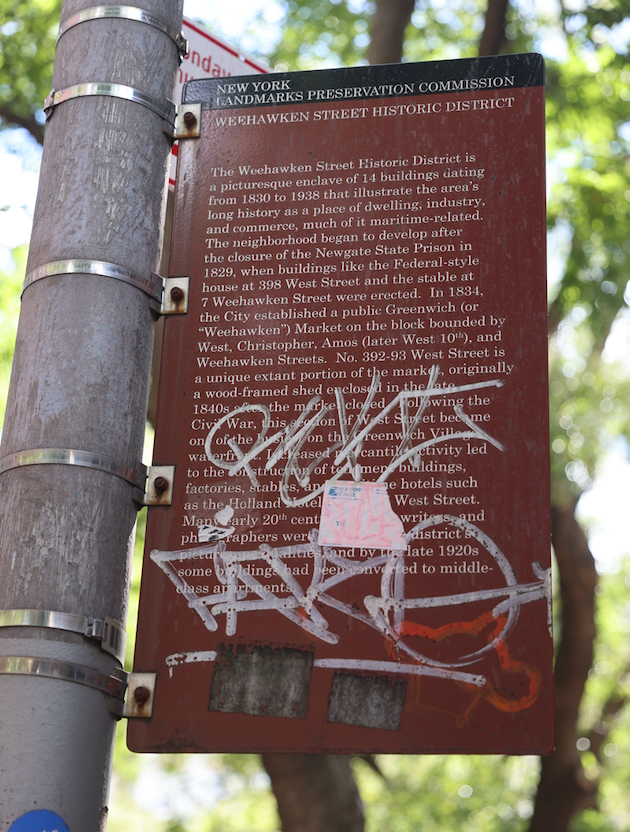
(Above) The “Weehawken Street Historic District” – the condition of the sign matches that of the street. The street includes a wooden building from around 1840.
Related Articles
No user responded in this post